20/11/2023
How to prevent rust: comprehensive tips and techniques

Evaldas Zabitis
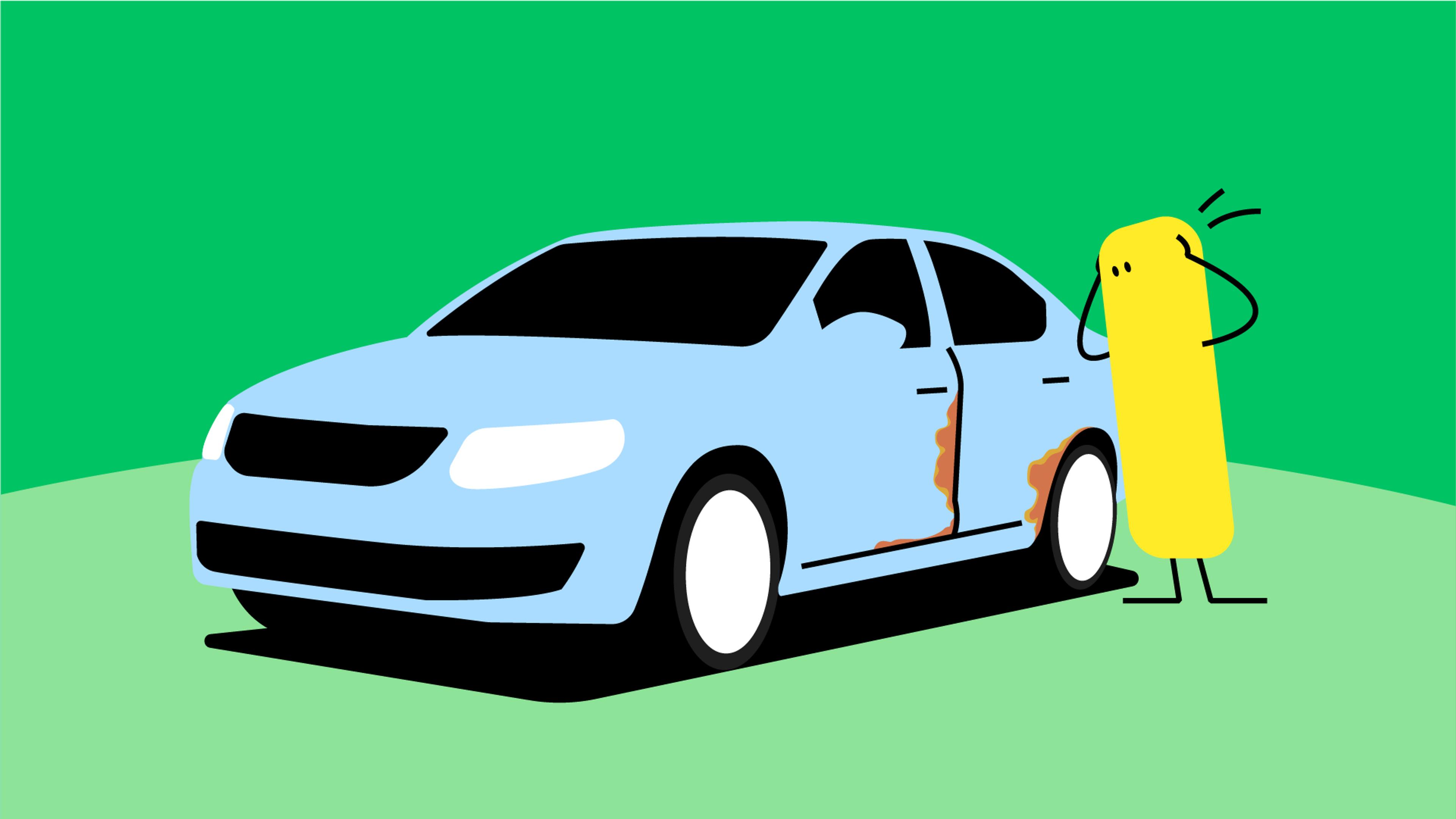
The battle against car rust is a perpetual one, with environmental factors and road conditions constantly threatening your vehicle's integrity and aesthetics. It’s especially cruel to careless car owners who fail to spot rust in its early stages and don’t know how to handle it.
While tackling and preventing car rust isn’t mission impossible, it does require some effort and dedication. In this post, we’ve compiled essential tips and techniques for combatting rust, enabling you to shield your automobile from the grasp of corrosion.

Afraid of buying a wreck?
Check any VIN to learn a vehicle's history!
What is rust and how to identify it?
Generally, rust appears in the form of brown stains on your car’s steel body panels. While there’s no quick way to fix them properly, addressing the problem early does help.
Depending on the severity of rust, it can be separated into 3 main categories.
Surface rust
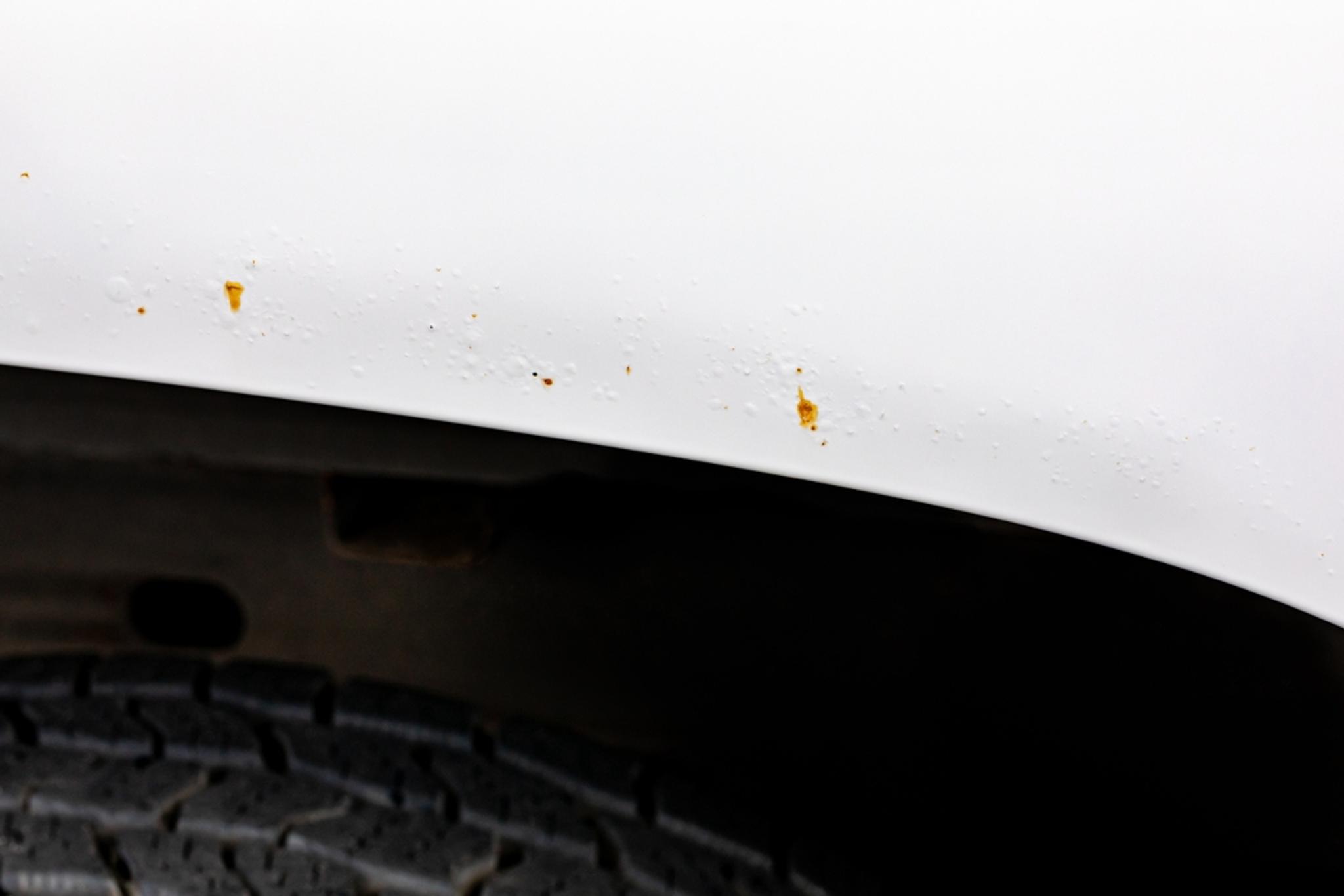
This stage is the earliest one. It occurs when the paint peels off and bare metal is exposed, immediately forming a rust layer. At this point, the steel is barely damaged, so fixing surface rust is relatively easy. People often ignore surface rust, but if you’re planning to fix it eventually – now it’s the best time to do it.
Scale rust

Scale rust gets deeper into metal, turning a part of its surface into a crusty rust. On vehicles, this type of rust usually appears a few months after surface rust occurs, but the actual period depends on the environment.
Fixing this type of rust is a bit more challenging because steel can be significantly damaged, becoming much thinner and weaker.
Penetrating rust
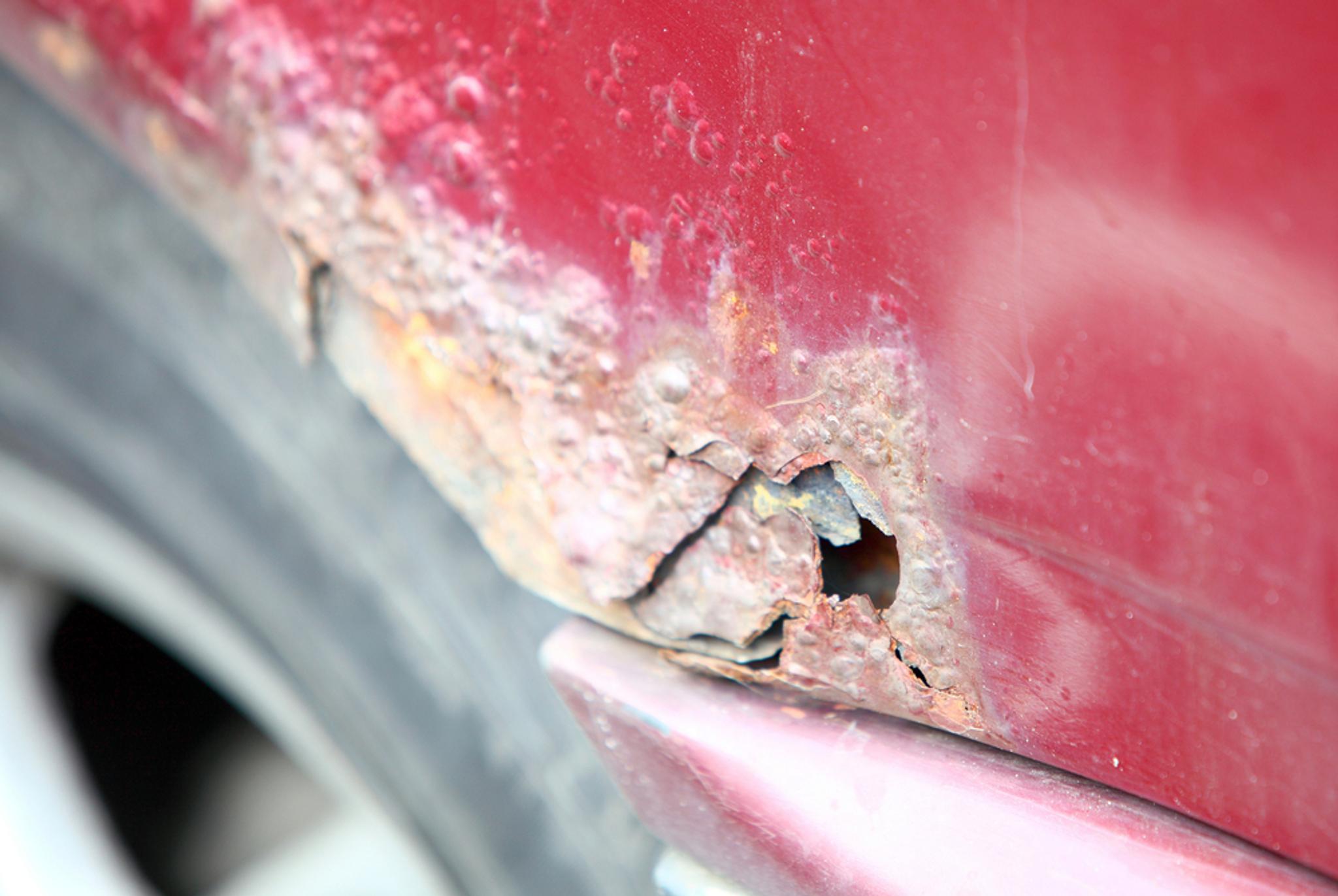
The worst type of rust is the penetrating rust – it eats away the steel and creates holes in it. The rust can penetrate all the way through the metal in just a few years. Usually, drivers notice rust before it becomes severe but ignore it, which leads to serious damage.
In the first stages of body corrosion, you will notice small paint bubbles on the surface, which will eventually spread and break the paint. The earlier you take action, the cheaper and easier the fix will be.
Why does rust occur?
Rust stems from a relatively simple chemical change, and understanding why it happens is essential to combat this process and protect your vehicle.
Rust starts developing when bare metal is exposed to humidity and oxygen, meaning that as long as the paint or other protective layers are intact, the metal can’t corrode. Unfortunately, we aren’t living in an ideal world, so car rust is very common.
Here are some of the main factors that cause rust on cars.
Moisture
Usually, car rust appears in areas that suffer from water, rocks, and road grime. The moisture itself isn’t strong enough to penetrate the car’s paint, but when it’s trapped inside the wheel wells or plastic parts, it often gets mixed with various chemicals, eventually breaking the paint and developing rust.
Each car has several drainage lines that collect water from tight areas and drain it on the ground. Over time, these lines can also clog up with grime and leaves, trapping water and speeding up corrosion.
Salt
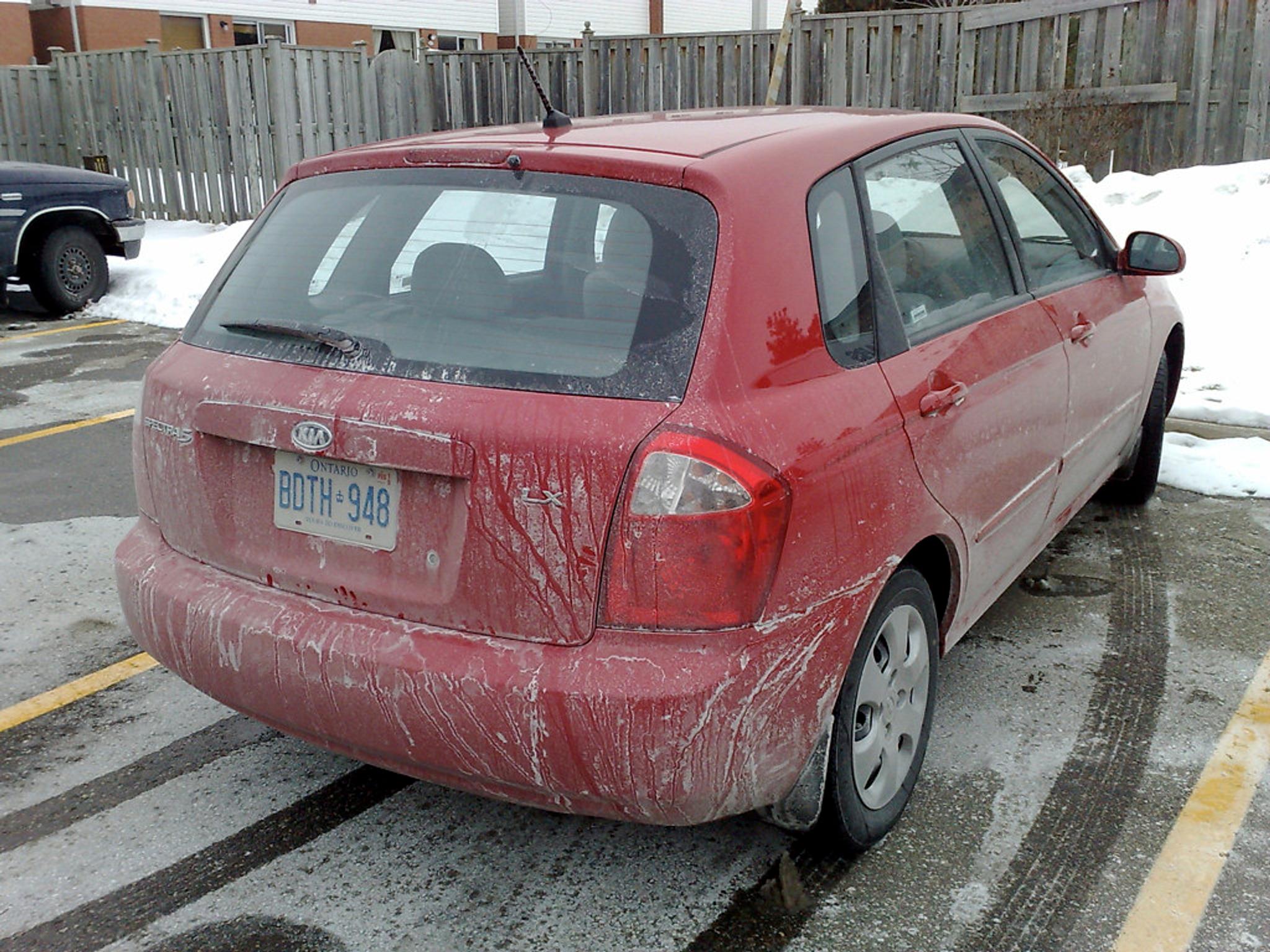
If road maintenance techniques in your area include road salt during winter, you know how thick the salt layer can get on a car after driving a few miles.
Besides looking bad, the salt also damages the paint and other protective layers, eventually exposing bare metal. You may start to notice that your car isn’t as shiny as it used to be as salt eats away the clear coat, followed by corrosion spots later on.
Just imagine how many tight spots get filled with water and salts, creating one of the worst mixtures for your paint. In fact, the extreme use of road salts is one of the main reasons why used car buyers are extra careful when buying a car from Scandinavian countries.
Damaged paint or finish
Rock chips, bird droppings, and scratches – a small nick on your paint is all you need to create a potential rust spot. Drivers often ignore small bumps and other paint damage because they don’t affect safety or functionality, but these exposed areas corrode quickly, and addressing them early on is a cheaper solution.
Poor maintenance
All cars have at least 3 layers protecting their steel body panels, including primer, base coat (paint), and a clear coat. The clear coat wears off over time, exposing much more vulnerable paint and primer layers. However, it wears off significantly faster if it isn’t maintained properly, so washing a car regularly is necessary to maintain the shine and strength of the paint.
Aluminum body panels aren’t corrosion resistant
Many car makers have been using aluminum to manufacture body panels for a couple of decades now. For instance, the hood, trunk, roof, doors, and a few other body parts of the new BMW 5 Series are made out of aluminum to reduce overall weight. However, used car buyers also find this to be an effective rust prevention.
While aluminum doesn’t rust, it still corrodes. It’s much more resistant to oxidation, but when it oxidizes, affected spots turn aluminum into a dusty substance that simply crumbles.
These cases are less common than steel rust and they don’t spread that quickly, but it’s worth knowing that buying an aluminum car won’t help you avoid corrosion problems completely.
What rust protection methods do car manufacturers use?
Car manufacturers usually offer a 5-6-year corrosion protection warranty, some extending even up to 12 years. Therefore, they must take some serious protective measures to avoid early corrosion.
Nowadays, they have many protective options to choose from, but it all depends on the manufacturer’s priorities. Below are some of the most common methods and technologies that car manufacturers use to protect cars from corrosion:
- Galvanization. Most modern car bodies are galvanized, meaning they’re dipped into molten zinc, which adds an additional layer that’s even harder than steel. Galvanization is one of the most common corrosion protection methods.
- Stainless steel. It’s often used in exhaust systems, manufacturing hose clamps, and other metal parts, such as seat belt buckles. What makes stainless steel rust-proof is the addition of chromium and other alloying elements. However, they don’t make car bodies out of stainless steel because it’s more expensive, heavier, and harder to work on.
- Protective coatings. The main protective coating that’s standard on nearly all cars is a clear coat, providing a high-gloss, durable finish. Many manufacturers also offer paint protection film as an optional feature.
- Chrome plating. This is a process where chromium is applied to metal through electrolysis, providing great protective features and aesthetics. However, chrome is becoming rare in modern cars, and it will be banned in new cars completely in 2024.
- Desiccants. Desiccant is a substance that’s used to draw moisture from surroundings and maintain a dry environment. They’re often used in fuse or relay boxes and AC systems.
Car makers are focused on ensuring a rust-proof experience during the warranty period, but they aren’t responsible for it after the corrosion protection warranty ends. Nevertheless, you shouldn’t face these problems as long as the car is washed regularly and maintained properly.
How to remove the existing rust
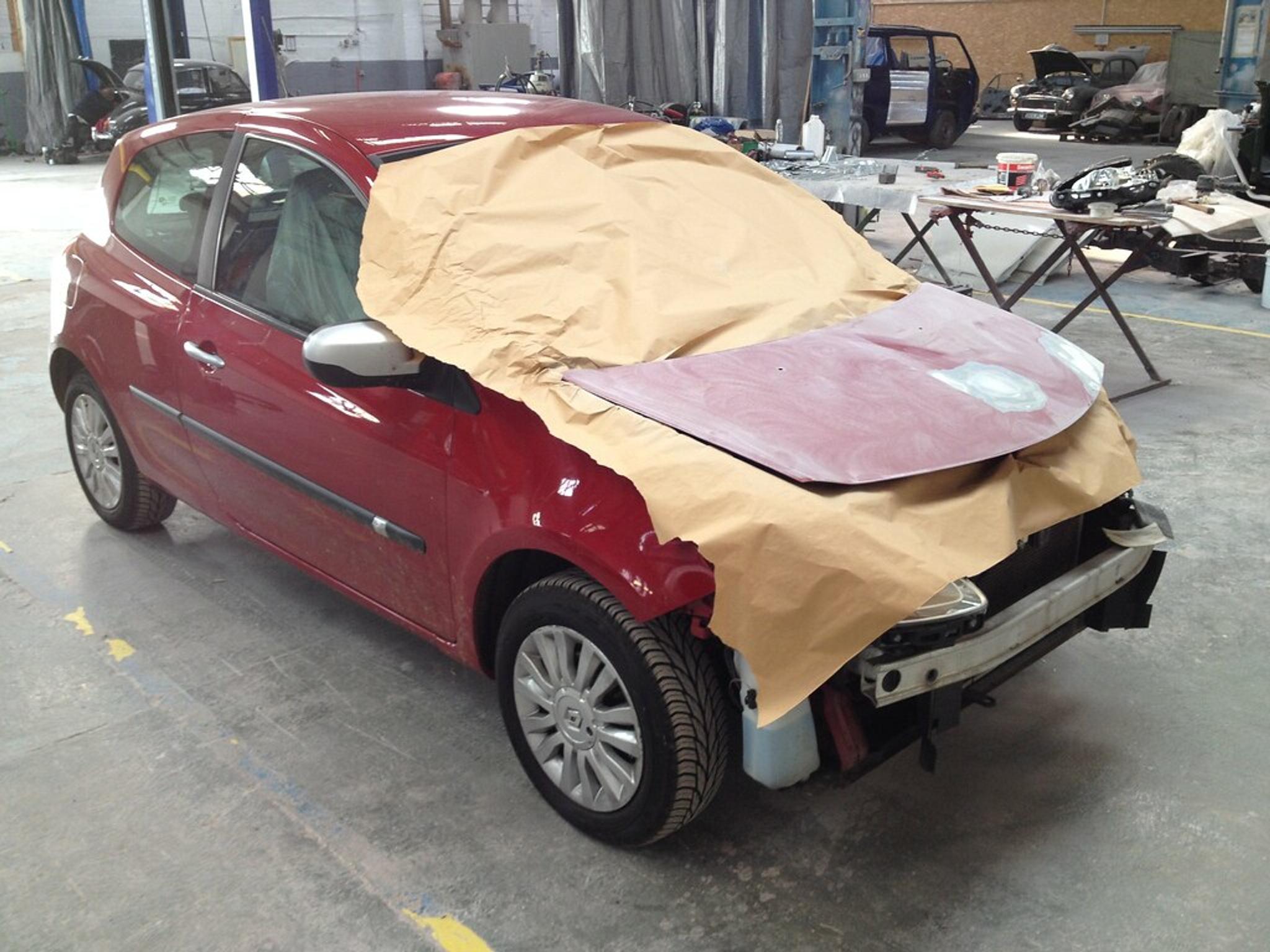
Removing existing corrosion sources is essential to prevent further rusting. You can do it yourself, but achieving the perfect result is almost impossible without professional tools and proper skills.
However, if you’re fine with experimenting and testing your abilities, we have all the essentials covered for you.
The preparation, tools, and supplies for rust removal
Successful rust removal begins with thorough preparation and the right tools and supplies. First of all, make sure you have safety goggles, gloves, and a face mask to avoid injuries and inhaling dust. You’ll also need a few tools and supplies to remove rust, including:
- Various grade sandpaper (80, 240, 400, 800, and 2000 are the key ones)
- Sanding block
- Wire brush or an angle grinder
- Body filler
- Body filler applicator
- Paper and tape for masking
- Rags
- Mineral spirits (white spirit)
- Rust converter
- Primer, base coat, and clear coat paint
- Glass fiber kit (optional)
You can fix minor to mediocre rust damage using these supplies. However, a glass fiber kit is only necessary if you’re dealing with penetrating rust since it helps to fix holes without welding.
You should be able to find all of this stuff at your local hardware store.
Removing the existing rust
The very first thing to do when fixing car rust is to peel off damaged paint and remove loose rust. Then, grind off the remaining rust using a wire brush or an angle grinder until you reach bare metal, finishing with an 80 grit dry sandpaper.
You may notice that some areas still have dark corrosion spots, but don’t worry and, most importantly, don’t overgrind them because some spots may have already penetrated the metal, and you’ll only make things worse.
Applying rust converter
Clean the surface using mineral spirits and apply some rust converter using a brush. A rust converter stops rust from spreading, so wait a few hours till the chemicals convert rust into a protective chemical barrier (the waiting period varies depending on the rust converter, so read the instructions carefully beforehand). Don’t grind, wipe, or clean the surface after the rust converter dries.
Pro tip: Pour some rust converter into a separate container so you wouldn’t contaminate the new fluid with rust. This will prevent the remaining rust converter from losing its efficiency.
Applying body filler
This is where your artistic side unfolds because the final result depends on how you form the body filler.
Start by preparing the body filler – you have to mix the body filler with a hardener, ensuring a mixture of 1:50 (1 part hardener to 50 parts body filler). Apply the mixture using a body filler applicator. Try to maintain the general shape of the car’s body, but don’t worry about the details too much because you’ll have to sand it afterward.
Bear in mind that properly mixed body filler fully cures in 20-30 minutes and starts hardening even earlier, meaning you only have about 5-10 minutes to apply the mixture. Body fillers cure only in 60-90 degrees F temperatures.
Once the body filler dries, sand off the rough edges using 180 grit dry sandpaper, switching to 240 grit to even out the surface – don’t forget to use the sanding block.
Usually, it’s not possible to achieve a good result after the first application – you may notice grooves, small holes, and other imperfections after sanding. In that case, apply another layer of body filler and repeat the process as many times as you need.
Priming and painting
Once you’re done with body filler, mask off the repair area with paper and tape, and wipe the surface using mineral spirits to remove all dust and oils – now you’re ready to spray the primer. It’s like an adhesive layer to which paint sticks much better. Primer also helps to cover the small scratches left on the surface of the body filler.
Apply the primer to the car from about 10 inches away – spray the entire surface you’re going to paint, evenly moving the can across the area, back and forth. When the primer dries, sand it with 800 grit wet sandpaper, switching to 2000 once the main imperfections are gone. Repeat the process if you sand through the primer.
Clean the surface with mineral spirits when the primer fully dries. You’re ready to apply paint and a clear coat.
Spray the paint while moving the can evenly – just like you were applying the primer. Paint at least 2 layers of paint, and then apply 3-4 layers of clear coat. Wait about 10 minutes between each layer, but allow the paint to dry for about 30 minutes before applying the clear coat.
Pro tip: Place paint and clear coat cans in hot water to warm them up an hour before spraying. This will ensure an even spread and easier application.
Rust prevention techniques
Rust prevention for cars is essential to prolong their lifespan and maintain their appearance. As mentioned before, rust occurs when bare metal is exposed to water and oxygen, therefore, your goal is to ensure the metal remains protected and all body repairs are/were made properly.
Clean your car
People like to wash and cherish their cars when the weather is nice, but they completely ignore road grime, salts, and dirt during colder seasons, creating ideal conditions for corrosion.
Regardless of the season, wash your car regularly in touchless car washes or use a microfiber sponge to remove dirt, salts, oil, and other accumulations. Avoid automatic car washes and abrasive sponges to preserve the clear coat.
Check for rust spots regularly
Corrosion spots often appear unexpectedly when rock chips or bird droppings damage the paint. Thoroughly check the car for rust every couple of months, especially the undercarriage, areas around the windows, and the entire lower area of the car.
The initial stages of corrosion appear as small paint bubbles, which are still pretty easy to fix. Address the problem before rust damages the metal and causes more expenses.
Apply an additional protection
An additional paint protection is a very common and effective rust-proofing method. Depending on your budget and needs, you can choose from various protection techniques, such as waxing, ceramic coating, or paint protection film (PPF).
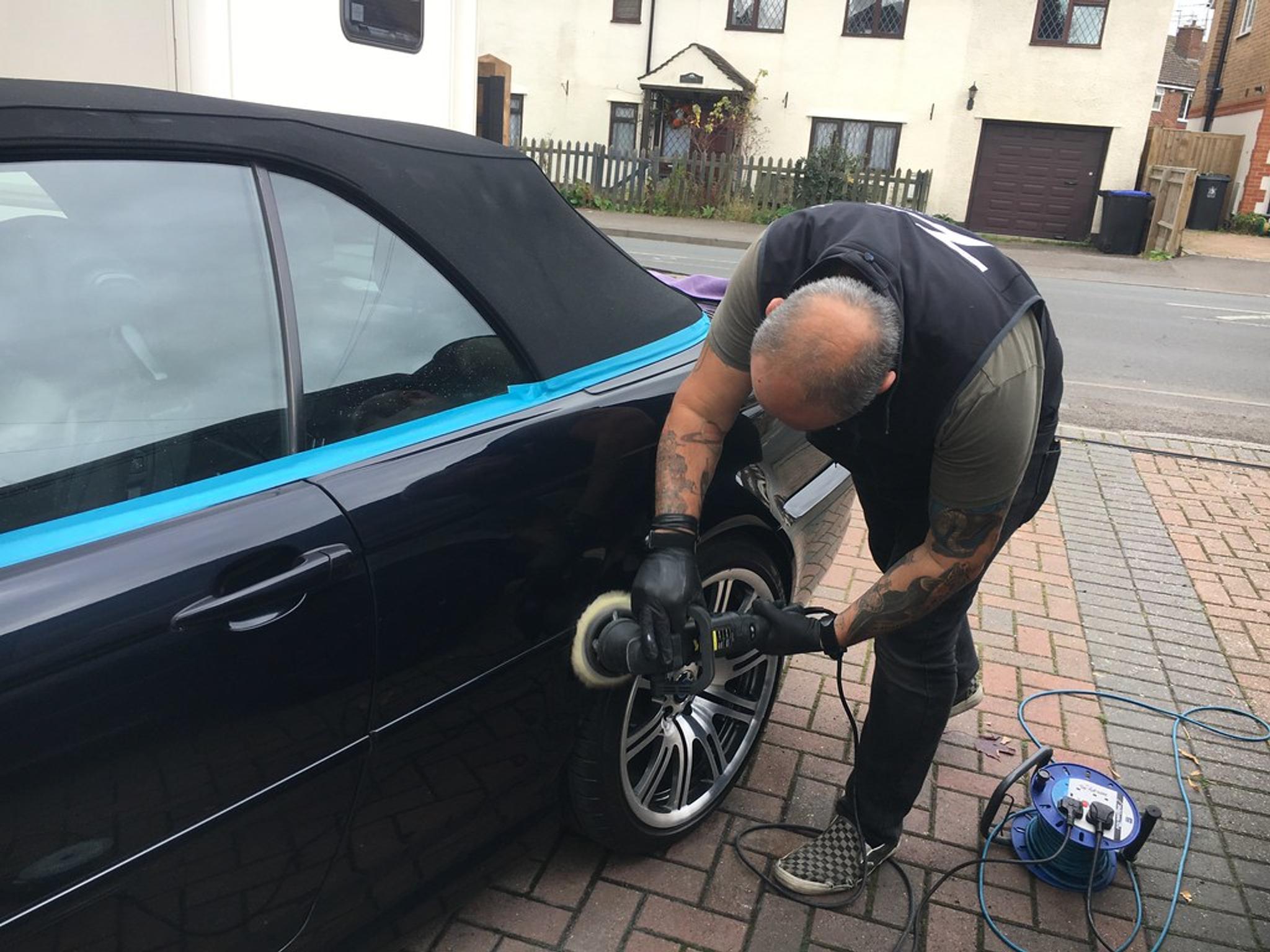
Waxing is the cheapest and quickest method of these, which usually costs from $50 to $150 and lasts up to 3 months. Ceramic coating is a more advanced method, creating a firm, shiny, and durable protective layer that lasts 2-5 years. This one usually costs around $2,000, depending on the size and condition of the car.
Finally, the most expensive and durable solution is PPF – a protective, self-healing film that lasts up to 10 years and costs several thousand dollars.
Know your vehicle’s history
Have you ever thought that your car’s history can also have a great impact on its current condition? If you’ve bought a used vehicle without checking its history, it may have been in an accident, its mileage may be fake, or it may have been flooded.

Check your VIN
Avoid costly problems by checking a vehicle's history. Get a report instantly!
If a car has been in an accident, the damaged area loses its rigidity and begins to rust. Most people choose cheap and quick repairs instead of replacing entire body panels or parts, creating weak spots for potential corrosion.
If a vehicle history report reveals that the car’s been damaged in the past, thoroughly check the previously damaged area to make sure there’s no corrosion or signs of shoddy repairs. Booking a professional inspection is the best option in this case.
Protecting your vehicle from corrosion is not just about aesthetics – it also comes down to ensuring your car's longevity and reliability. Get rid of rust as soon as you notice it, and remember how to prevent corrosion to enjoy a rust-free ride for years to come.
Frequently asked questions

Article by
Evaldas Zabitis
Evaldas has been writing since middle school and has had a passion for cars for as long as he can remember. Right after getting his driver’s license, he spent all of his savings on shoddy cars so he could spend time fixing, driving, and selling them. Evaldas is always interested in automotive technical innovations and is an active participant in automotive community discussions.
